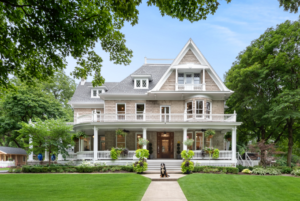
Purchasing a home is one of the most significant financial decisions a person can make. For many homebuyers, the appeal of historic homes goes beyond mere aesthetics—they represent a blend of cultural heritage, architectural beauty, and long-term value. This guide explores why investing in historic homes can be a rewarding decision for discerning buyers.
The Unique Charm and Architectural Beauty of Historic Homes
Historic homes often boast architectural styles and craftsmanship that are difficult to find in modern construction. These residences frequently feature intricate woodwork, detailed moldings, stained glass windows, and hand-laid brick or stonework, all of which showcase the artistry of bygone eras. The timeless appeal of these features contributes not only to the visual charm of the property but also to its distinct character.
Unlike many contemporary homes built to maximize efficiency and cost-effectiveness, historic homes were designed with a focus on aesthetics and individuality. The presence of unique design elements and materials can provide an unmatched sense of identity and pride of ownership. For many buyers, the opportunity to own a piece of history is a compelling reason to invest.
Potential for Appreciation and Value Retention
Investing in historic homes can also be financially advantageous. Due to their unique characteristics and limited availability, these properties often retain their value well and can appreciate significantly over time. Many buyers find that historic homes offer greater stability in market value compared to newly built properties, which can be subject to rapid depreciation.
Additionally, historic districts and neighborhoods tend to be well-established with mature landscaping, community amenities, and proximity to city centers, which further enhance property values. The preservation of historic homes also aligns with broader community efforts to maintain cultural heritage, often supported by local governments through grants, tax incentives, or special financing options.
Tax Incentives and Financial Benefits for Preservation
One of the practical benefits of purchasing historic homes is the potential access to financial incentives aimed at preservation. Many municipalities and government programs offer tax credits, grants, or low-interest loans to homeowners who commit to restoring and maintaining the historical integrity of their property.
These incentives can substantially offset the costs associated with renovation and upkeep, making the investment more financially viable. Homebuyers interested in historic homes should thoroughly research available programs in their area, as these benefits vary widely but can provide meaningful support for preservation efforts.
The Challenges and Rewards of Renovation
While historic homes have many advantages, prospective buyers should also consider the responsibilities that come with ownership. These properties often require more maintenance and thoughtful renovation to preserve their historic features. Renovations in historic homes must typically adhere to specific guidelines to maintain authenticity, which can increase costs and limit certain modern upgrades.
However, many buyers view these challenges as part of the unique reward of owning a historic home. Restoring a historic property allows homeowners to engage deeply with the craftsmanship of the past and contribute to preserving architectural heritage for future generations. The sense of accomplishment and community recognition that comes from maintaining a historic home can be deeply satisfying.
The Cultural and Emotional Connection to History
Beyond financial and architectural considerations, historic homes offer an intangible value—a connection to the past. These homes often serve as tangible links to local history and culture, enriching the lives of their owners with stories and significance that new constructions cannot replicate.
Living in a historic home often instills a sense of continuity and belonging. For many, it is an opportunity to become stewards of a legacy, helping to preserve important cultural landmarks and contributing to the character of their neighborhoods. This emotional connection can enhance the overall satisfaction and pride of homeownership.
Conclusion
Historic homes present a unique opportunity for homebuyers seeking more than just a place to live. Their architectural beauty, potential for value appreciation, financial incentives for preservation, and deep cultural significance make them a worthwhile investment. While owning a historic home comes with challenges, the rewards—both tangible and intangible—often outweigh the difficulties. For those who appreciate craftsmanship, history, and community, historic homes are not only investments in property but also in heritage and identity.
